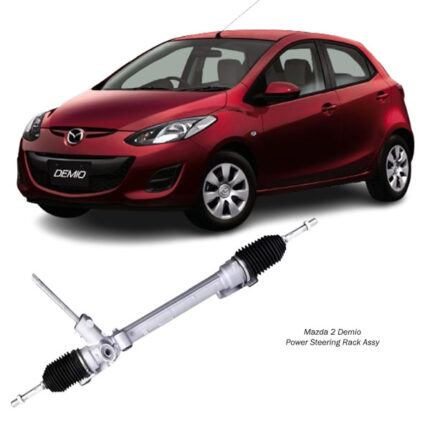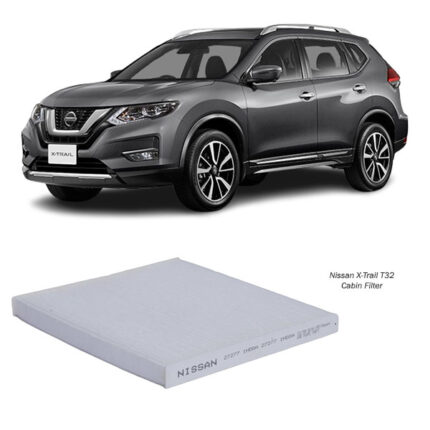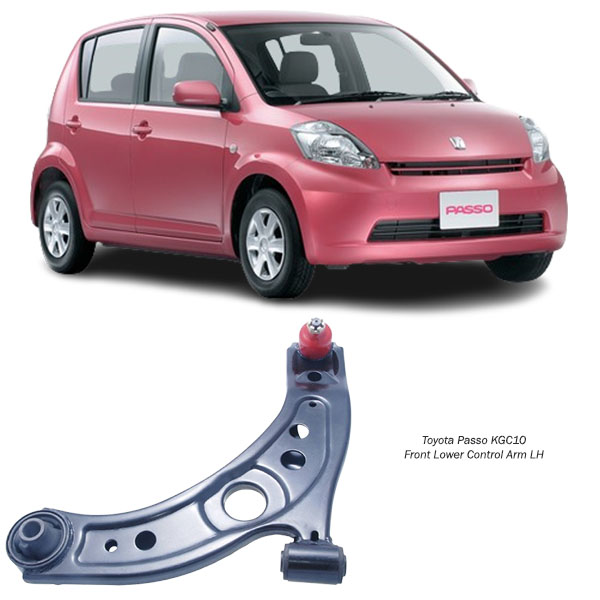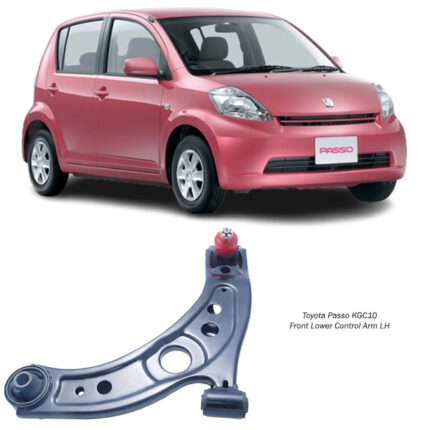-10%
The Front Lower Control Arm (LH) is an essential part of your vehicle’s suspension system, connecting the chassis (frame) to the left front wheel. It plays a critical role in maintaining stability, absorbing road shocks, and ensuring proper wheel alignment.
🚗💨 Without a properly functioning control arm, your vehicle’s handling and safety can be severely compromised.
Why is the Front Lower Control Arm Important? 🏁
✔️ Provides stability and support to the suspension system.
✔️ Keeps the front left wheel aligned and controlled during movement.
✔️ Absorbs road shocks and impacts for a smoother ride.
✔️ Works with ball joints and bushings to ensure controlled wheel movement.
✔️ Improves overall steering precision and braking performance.
2. Understanding the Function of the Lower Control Arm ⚙️
A vehicle’s suspension system allows the wheels to move independently while keeping the vehicle stable. The front lower control arm (LH) is a crucial link in this system, ensuring that the left wheel remains in position while moving up and down over road irregularities.
Key Functions of the Lower Control Arm 🔩
1️⃣ Maintains correct wheel positioning while allowing vertical movement.
2️⃣ Connects to the steering system, enabling precise handling.
3️⃣ Works with shocks and springs to absorb road impacts.
4️⃣ Supports vehicle stability during acceleration, braking, and cornering.
💡 Think of the control arm as a strong, flexible bridge that holds the wheel in place while letting it move naturally.
3. Key Components of a Front Lower Control Arm 🏗️
A front lower control arm is made up of several components that contribute to its function and durability:
1. Control Arm Body 🚙
- Typically made from stamped steel, aluminum, or cast iron.
- Designed to withstand strong forces and road shocks.
2. Ball Joint 🔄
- A pivot point that connects the control arm to the steering knuckle.
- Allows controlled movement while steering and absorbing impacts.
3. Bushings 🏎️
- Made from rubber or polyurethane, reducing metal-to-metal contact.
- Absorbs vibrations and prevents excessive wear.
4. Mounting Points 🔧
- Secure the control arm to the chassis and suspension components.
4. Types of Front Lower Control Arms 🚘
Different materials and designs are used in control arms to suit different vehicles and driving conditions.
1. Stamped Steel Control Arms 🏗️
✔️ Common in standard vehicles.
✔️ Lightweight and cost-effective.
❌ Prone to rust and corrosion.
2. Cast Iron Control Arms 🏋️
✔️ Very strong and durable, used in trucks and SUVs.
✔️ Handles heavy loads and rough terrain.
❌ Heavier than other materials, which can affect performance.
3. Aluminum Control Arms 🚀
✔️ Lightweight, corrosion-resistant, and commonly used in high-performance vehicles.
❌ More expensive than steel or cast iron.
5. How Does a Front Lower Control Arm Work? ⚙️
The front lower control arm (LH) works together with the suspension and steering systems to ensure smooth driving. Here’s how it functions:
1️⃣ Driving on a Straight Road 🛣️
- The control arm keeps the left front wheel aligned and stable.
2️⃣ Driving Over Bumps 🏔️
- The wheel moves up and down, and the control arm absorbs the impact using its bushings and ball joint.
3️⃣ Turning the Steering Wheel 🔄
- The control arm allows the wheel to pivot while keeping it stable.
4️⃣ Braking 🏁
- The control arm reduces excessive wheel movement, improving braking response.
💡 A faulty control arm can cause excessive wheel movement, leading to instability and unsafe driving conditions.
6. Signs of a Failing Front Lower Control Arm (LH) 🚨
A worn-out or damaged left control arm can cause handling and safety issues. Watch out for these warning signs:
1. Clunking or Knocking Noises 🔊
- Loose or worn-out bushings and ball joints create a knocking noise when driving over bumps or making turns.
2. Poor Steering Response 🔄
- A faulty control arm affects wheel alignment, making steering feel loose or unpredictable.
3. Uneven Tire Wear 🏁
- A misaligned wheel leads to uneven tire wear, reducing tire lifespan and performance.
4. Steering Wheel Vibrations 🚗
- Worn bushings allow excessive movement, leading to vibrations while driving.
5. Vehicle Pulling to One Side 🏎️
- If the left control arm is damaged, your vehicle may pull toward the left while driving.
🚨 Ignoring these symptoms can lead to complete suspension failure and potential accidents!
7. How to Maintain a Front Lower Control Arm (LH) 🔧
To extend the lifespan of your control arm and ensure safety, follow these maintenance tips:
1. Regular Inspections 🔍
✔️ Check for cracks, rust, or worn-out bushings every 20,000 – 30,000 km.
2. Lubricate Suspension Components 🛢️
✔️ Apply grease to the ball joints to prevent wear.
3. Replace Worn Bushings 🏎️
✔️ Cracked or deteriorated bushings should be replaced immediately.
4. Avoid Rough Driving 🚗💨
✔️ Driving over potholes or rough terrain can shorten control arm life.
5. Get a Wheel Alignment After Replacement 🛞
✔️ A misaligned wheel can put extra strain on the control arm.
8. How to Replace a Front Lower Control Arm (LH) 🔄
Replacing a front lower control arm is a moderate to advanced repair job. Here’s a general guide:
Tools Needed 🧰
✔️ Jack & Jack Stands
✔️ Wrench & Socket Set
✔️ Ball Joint Separator
✔️ Torque Wrench
Step-by-Step Replacement Guide 🏗️
1️⃣ Lift the Vehicle – Secure it with jack stands.
2️⃣ Remove the Front Wheel – Gain access to the control arm.
3️⃣ Detach the Ball Joint – Use a ball joint separator to disconnect it from the steering knuckle.
4️⃣ Unbolt the Control Arm – Remove mounting bolts and bushings.
5️⃣ Install the New Control Arm – Secure it in place with bolts.
6️⃣ Reconnect the Ball Joint & Wheel – Ensure everything is tightened properly.
7️⃣ Lower the Vehicle & Test Drive – Check for noises or alignment issues.
🚨 Always get a wheel alignment after replacing a control arm to prevent handling issues!
10. Conclusion 🎯
The Front Lower Control Arm (LH) is a crucial component of the suspension system, ensuring stability, smooth handling, and safety. Regular maintenance and timely replacement can prevent serious steering and suspension issues.
Follow us on Facebook for more parts.





Reviews
Clear filtersThere are no reviews yet.